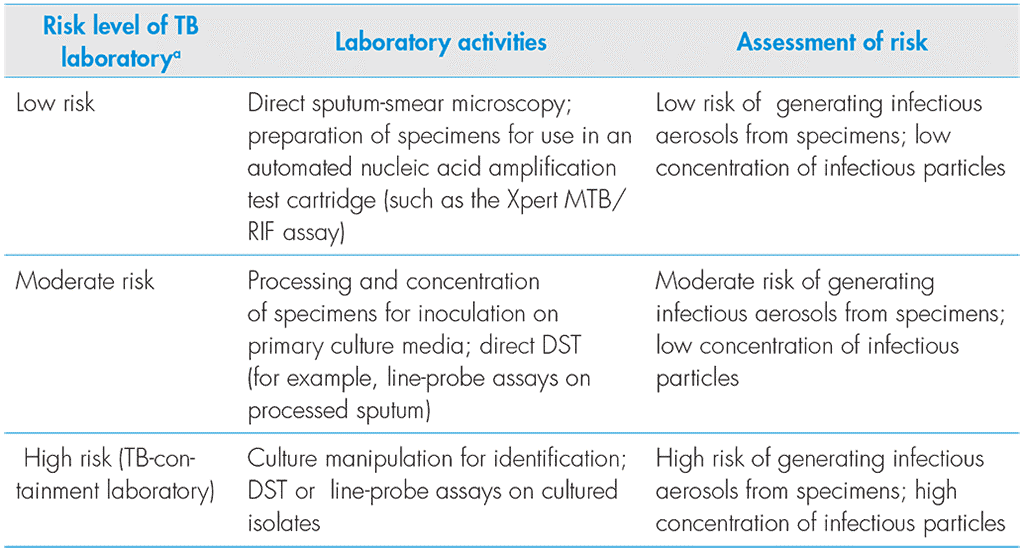كتاب روابط اجتياز لـ 1266
TB laboratory facilities can be classified into three main levels of procedural risk, based on the activities being performed and their associated risks:
- low TB risk
- moderate TB risk
- high TB risk (such as a TB-containment laboratory).
The probability of aerosols being generated is a key factor to consider in determining the level of risk and the necessary mitigation or control measures. Direct sputum-smear microscopy, when performed using good microbiological techniques, entails a low risk of generating infectious aerosols, and this procedure may therefore be performed on an open bench, provided that adequate ventilation can be assured. Guidance and recommendations for safe practices to be followed when performing direct-smear microscopy have been described in WHO’s guidelines on laboratory services for TB control.¹¹ ¹²
Procedures that liquefy specimens – such as those used during specimen digestion and processing for culture inoculation, direct DST or direct line-probe assays – have an increased risk of generating aerosols when compared with other techniques even when good microbiological technique is used; thus, these procedures should be performed in a BSC. Manipulation of cultures for indirect DST or line-probe assays involves procedures where a high concentration of bacilli are present and a high risk of aerosol generation exists; such activities must be performed in a BSC within a TB-containment laboratory. The appropriate activities, the assessment of procedural risk, and the minimum level of precautions required for the different levels of TB laboratories are presented in Table 3.

Collecting sputum specimens from patients is potentially hazardous and should not be performed in the laboratory. A well ventilated area that is separate from the laboratory should be identified for sputum collection. This area should preferably be outdoors.
Table 3. Risk precaution levels, associated laboratory activities and risk assessment for tuberculosis (TB) laboratories

DST, drug-susceptibility testing.
ᵃ The risk level refers to how likely it is that someone in the laboratory will become infected with TB as a result of procedures performed in the laboratory.

 تعليق
تعليق